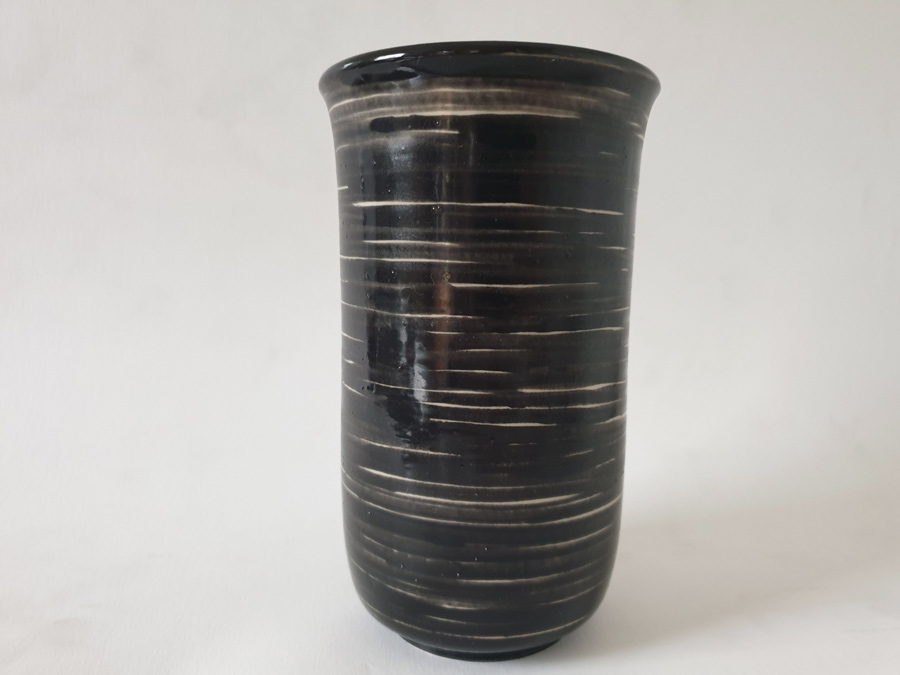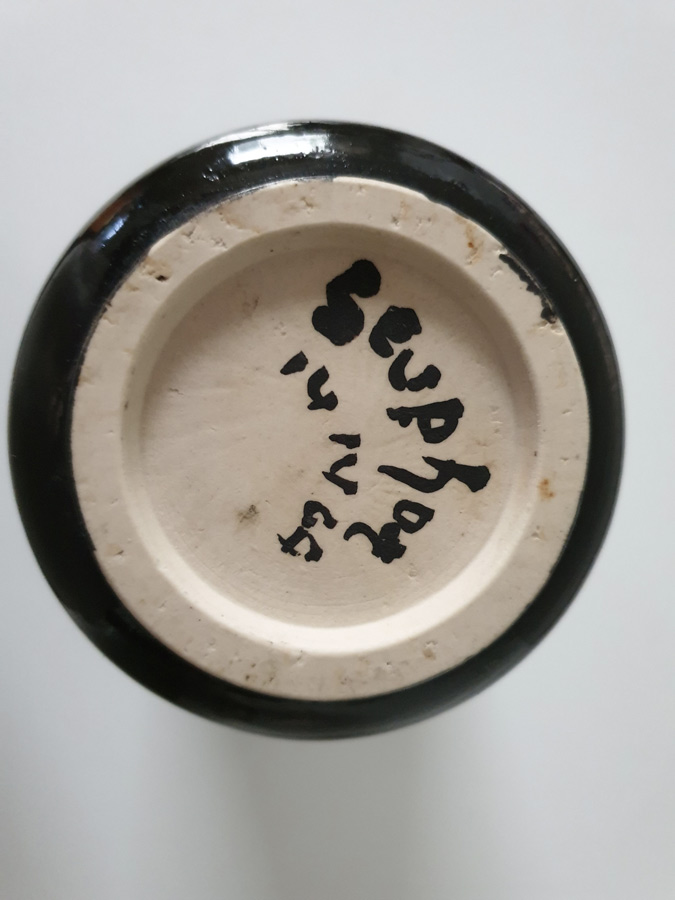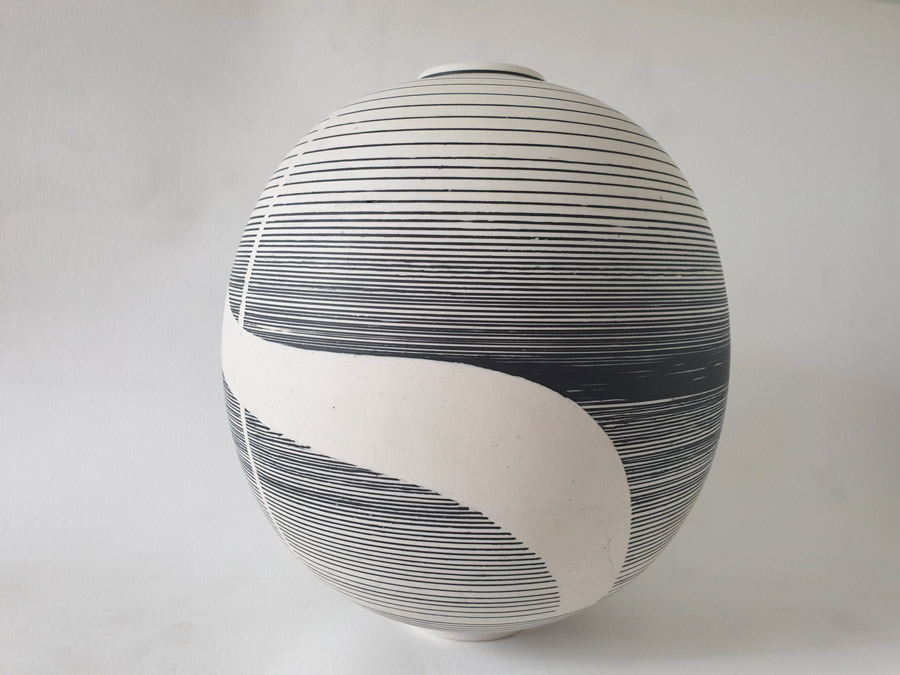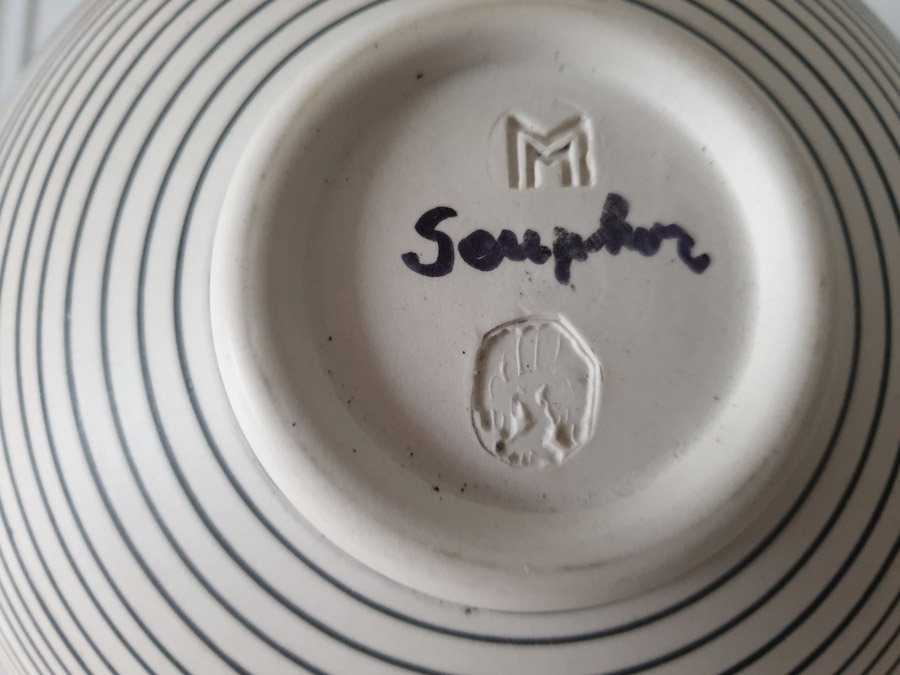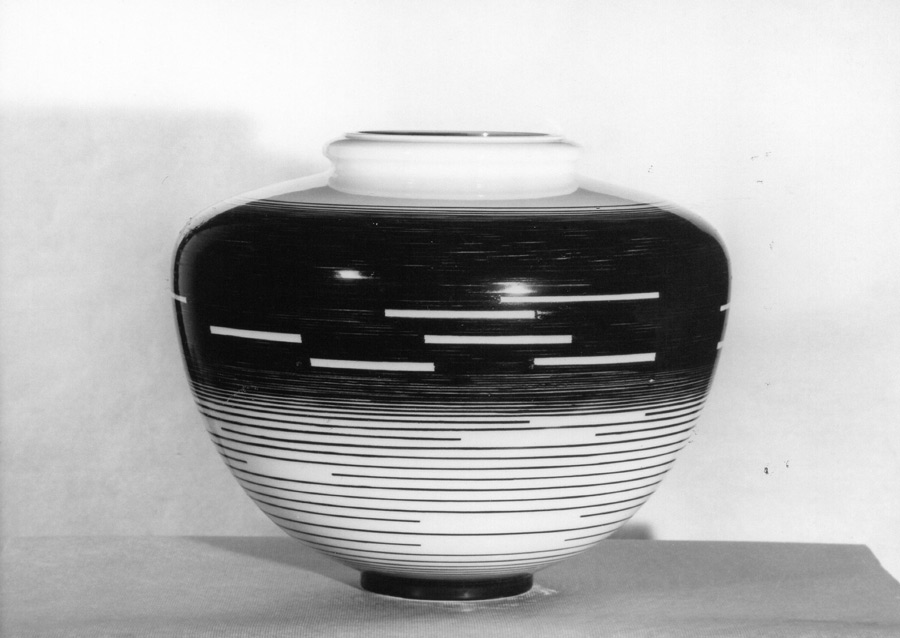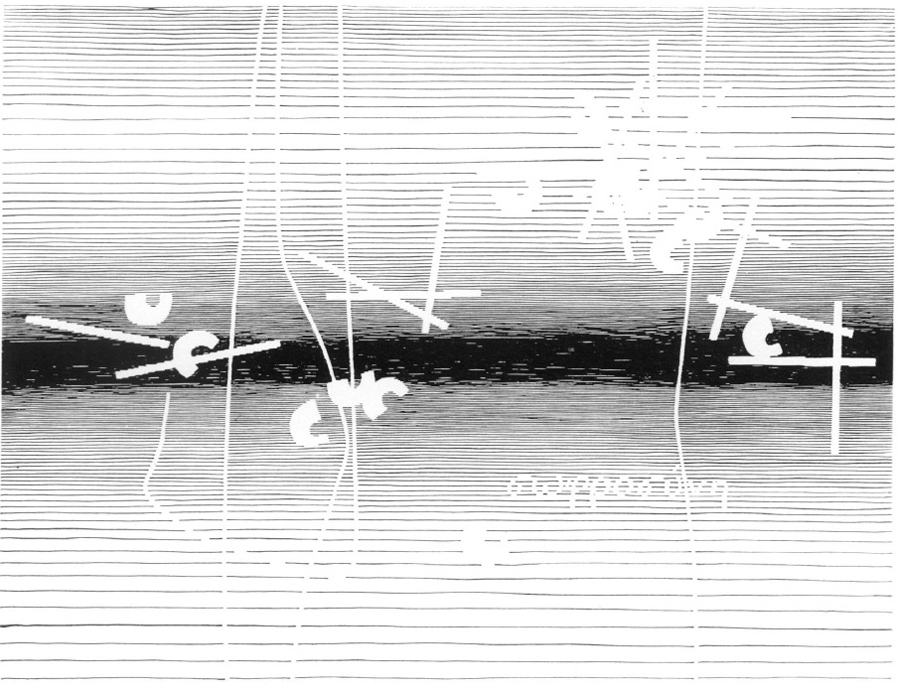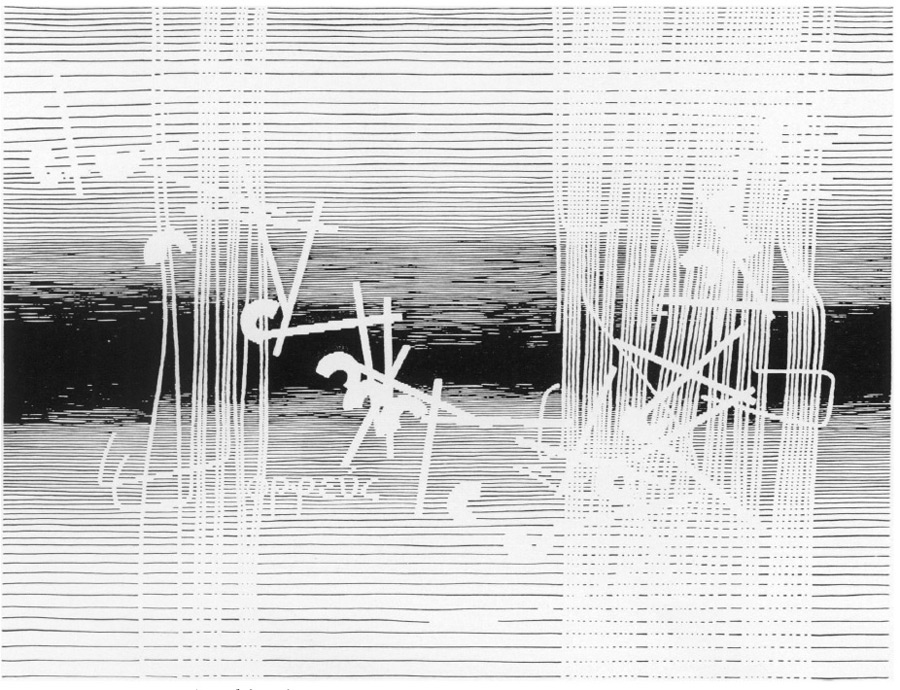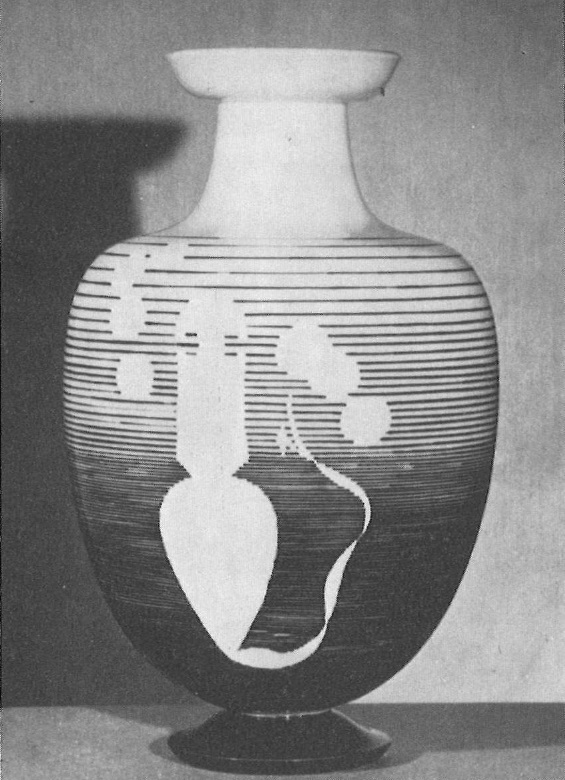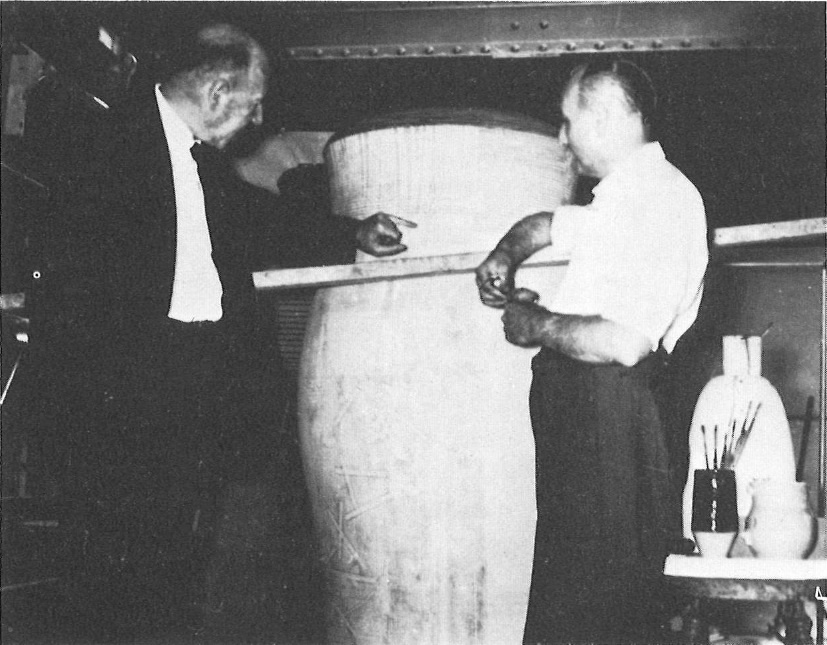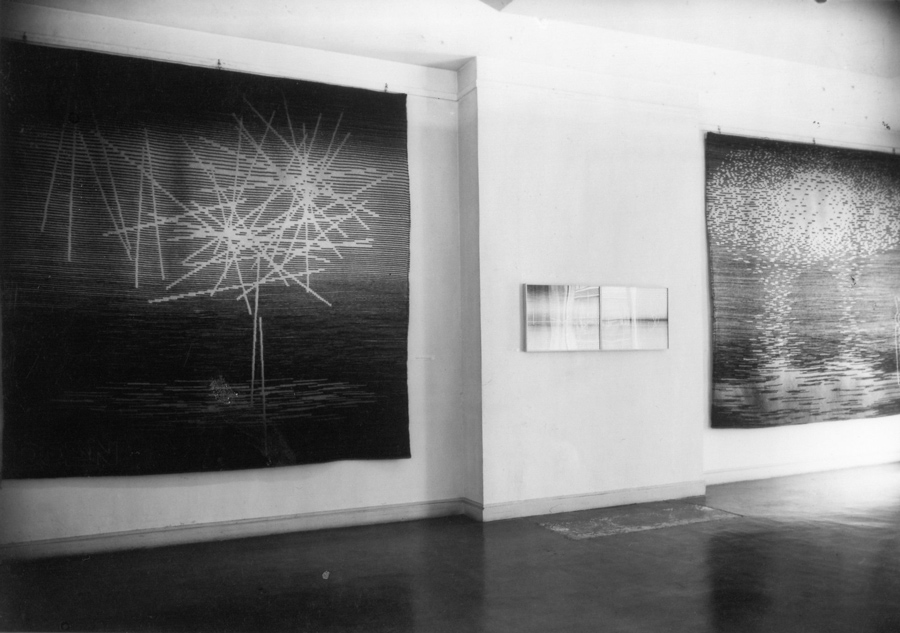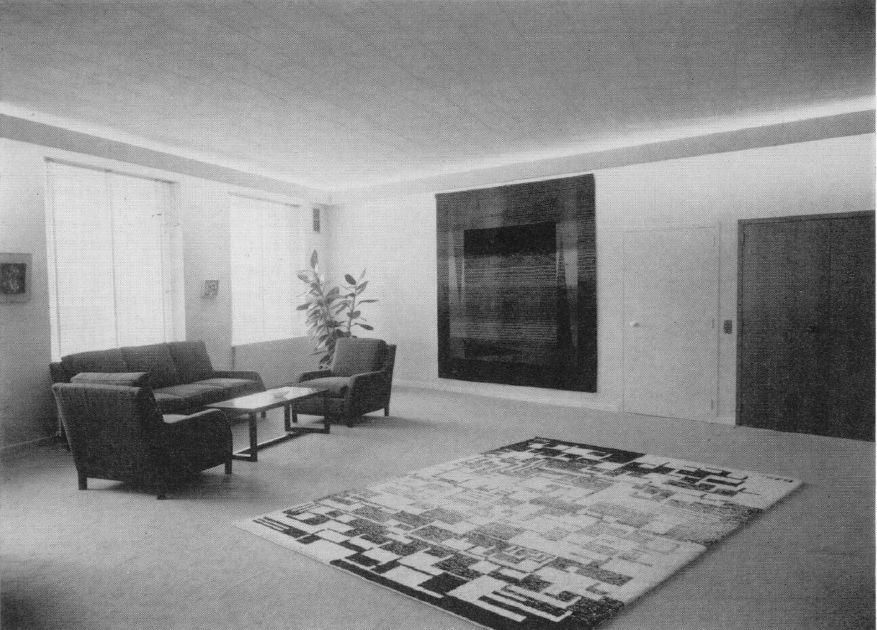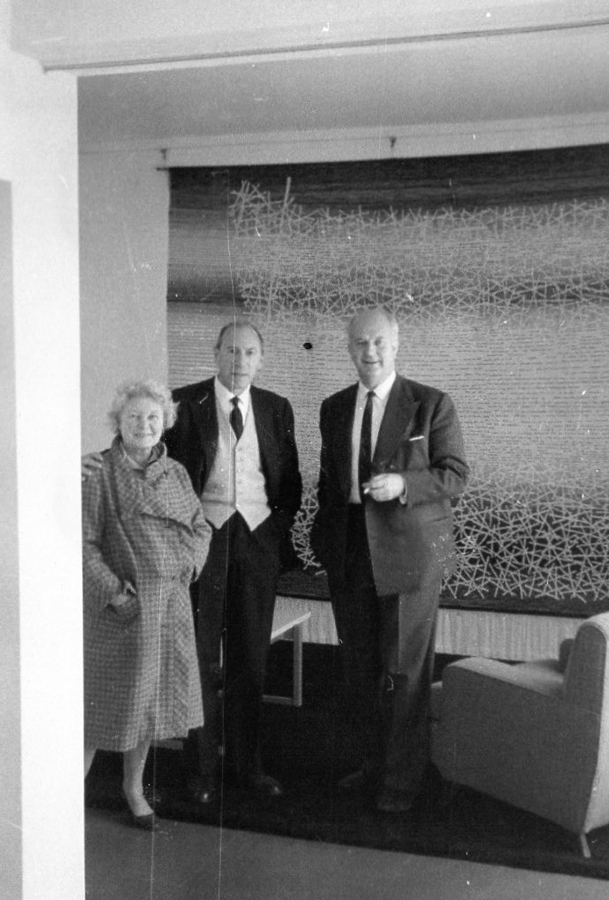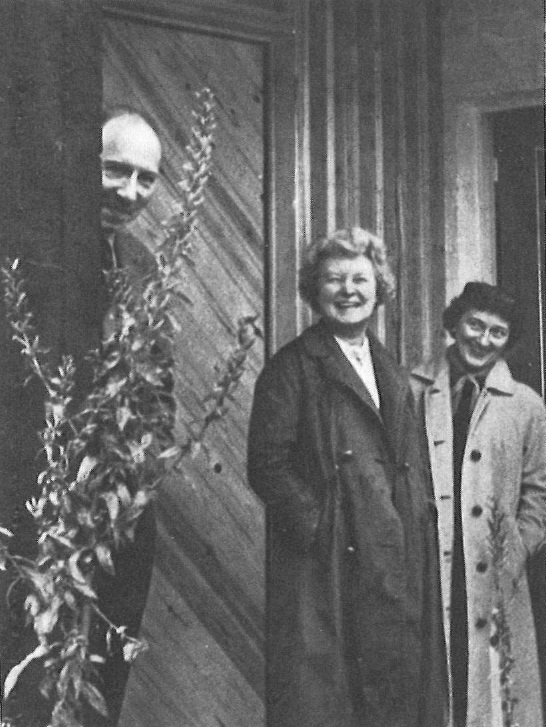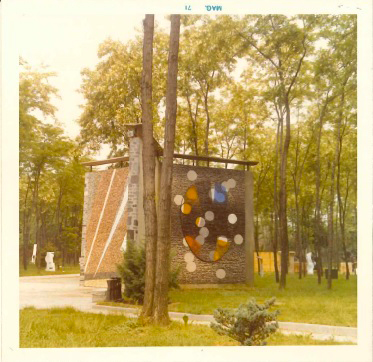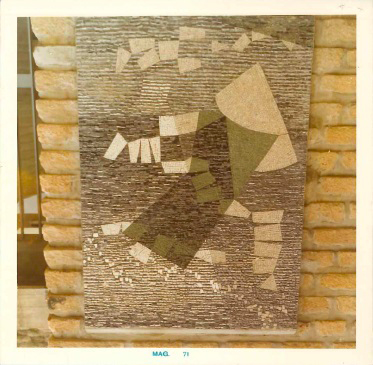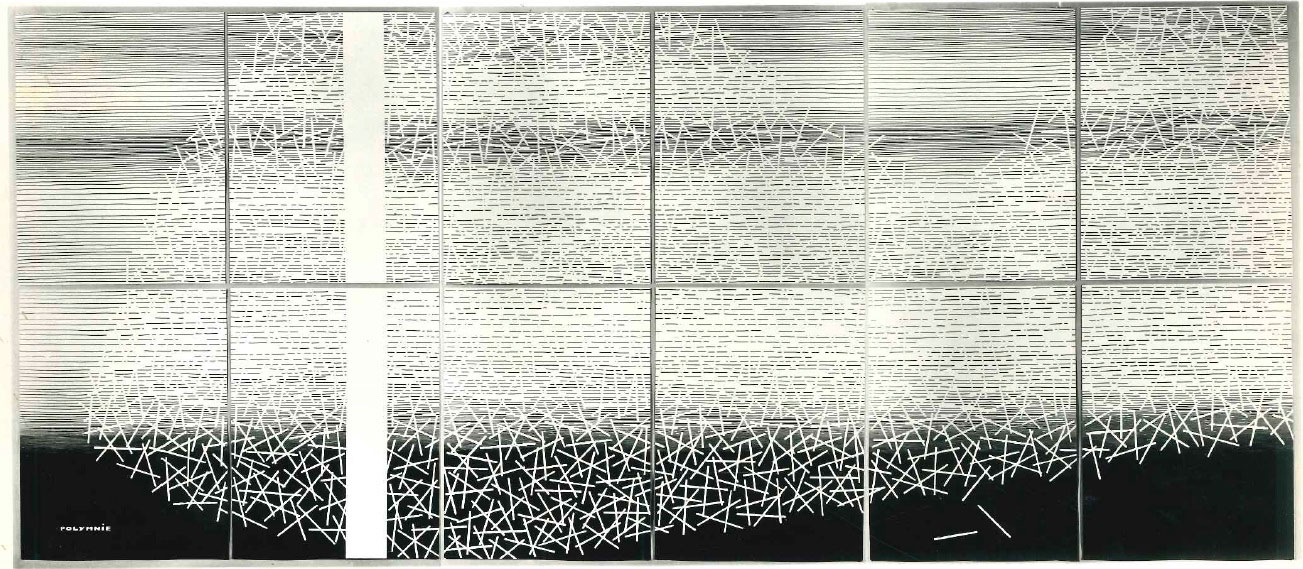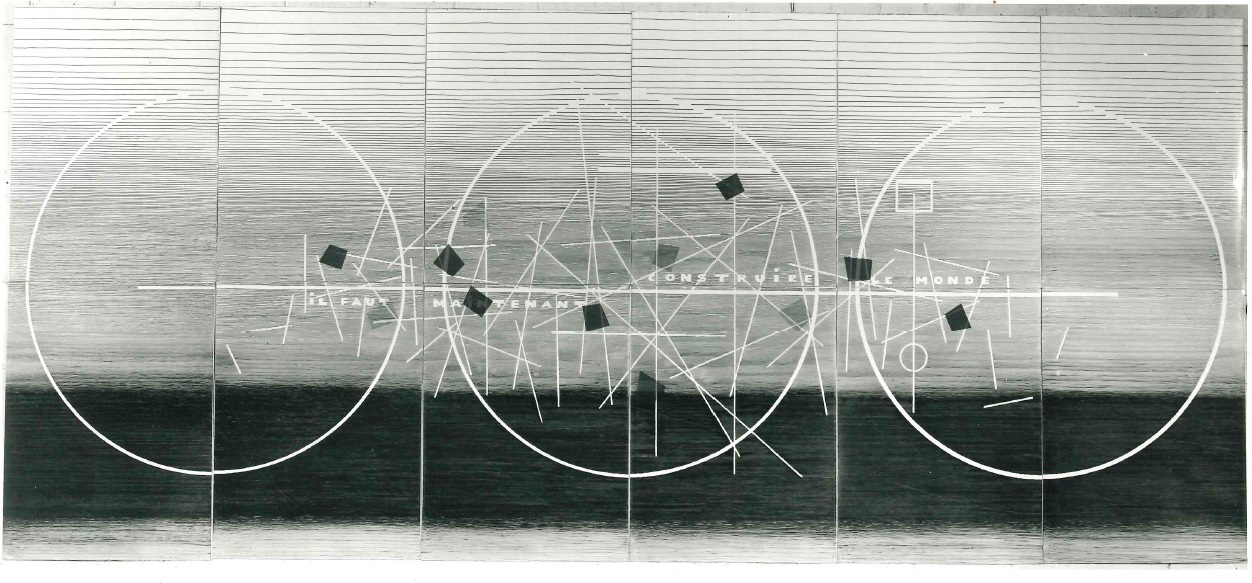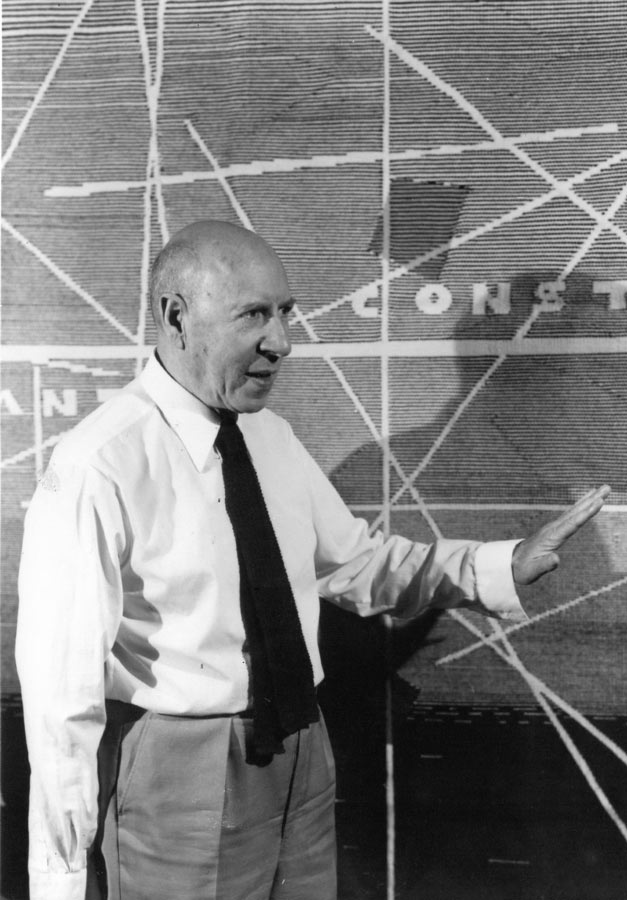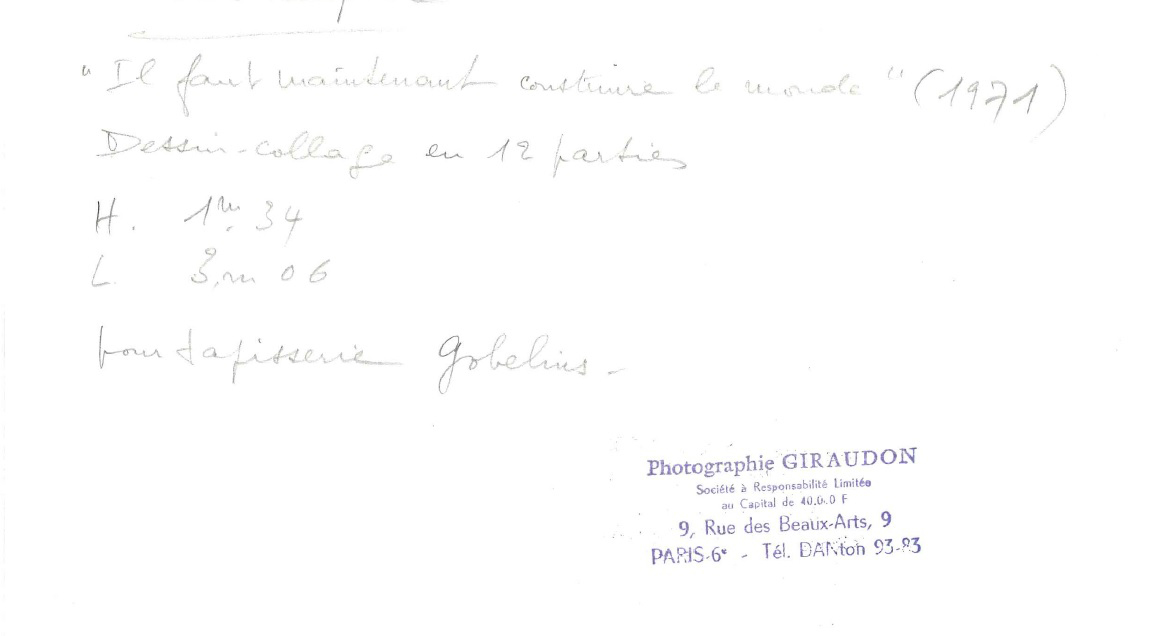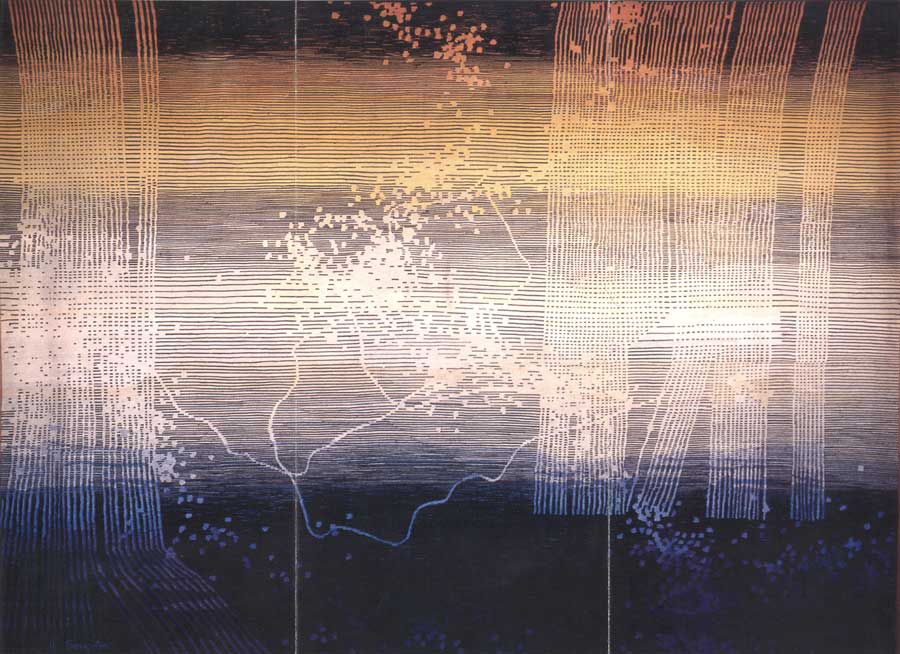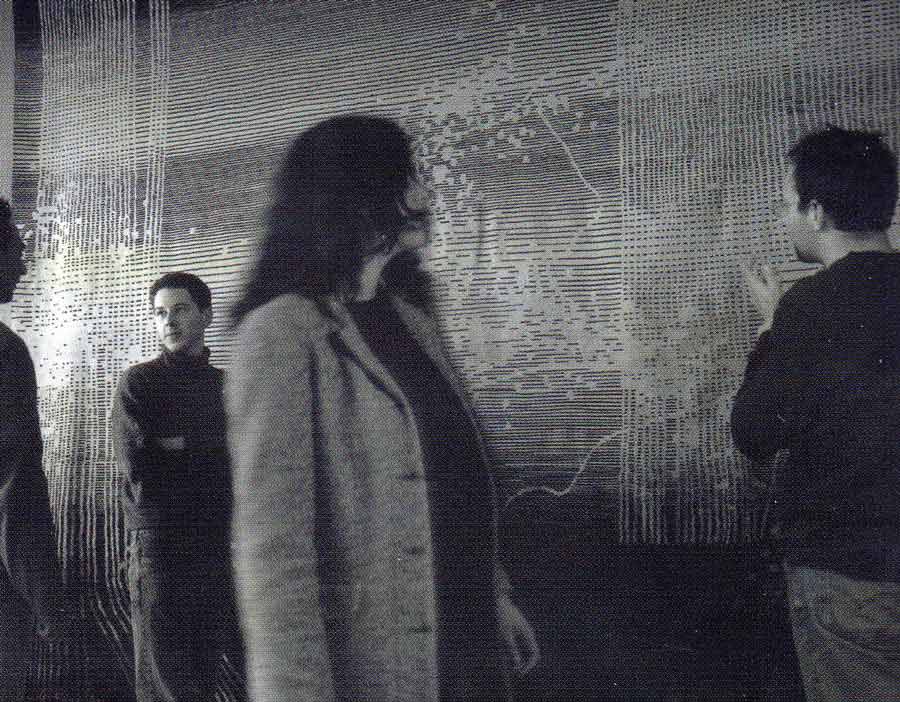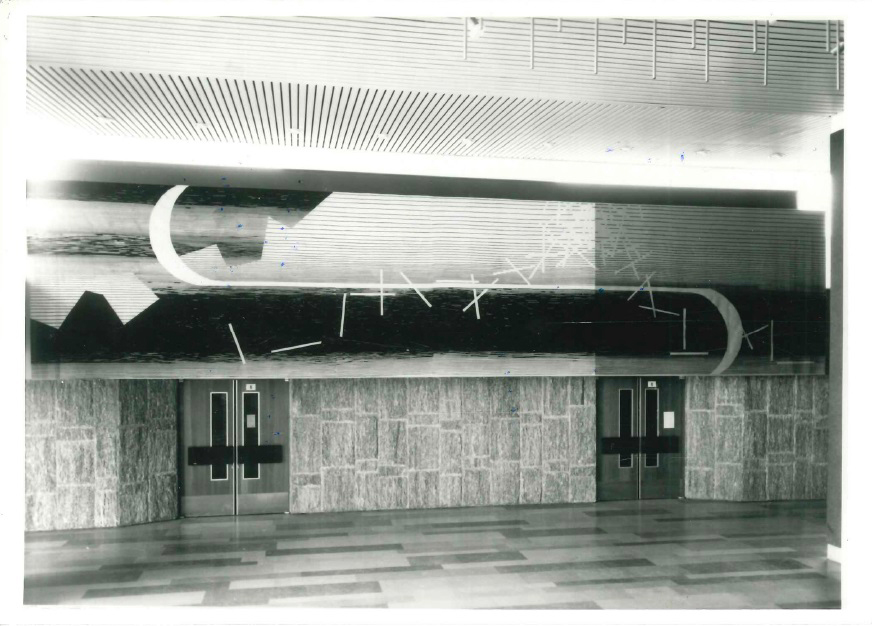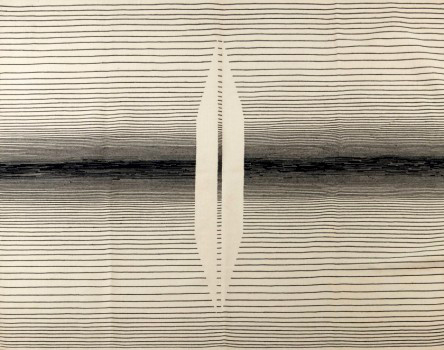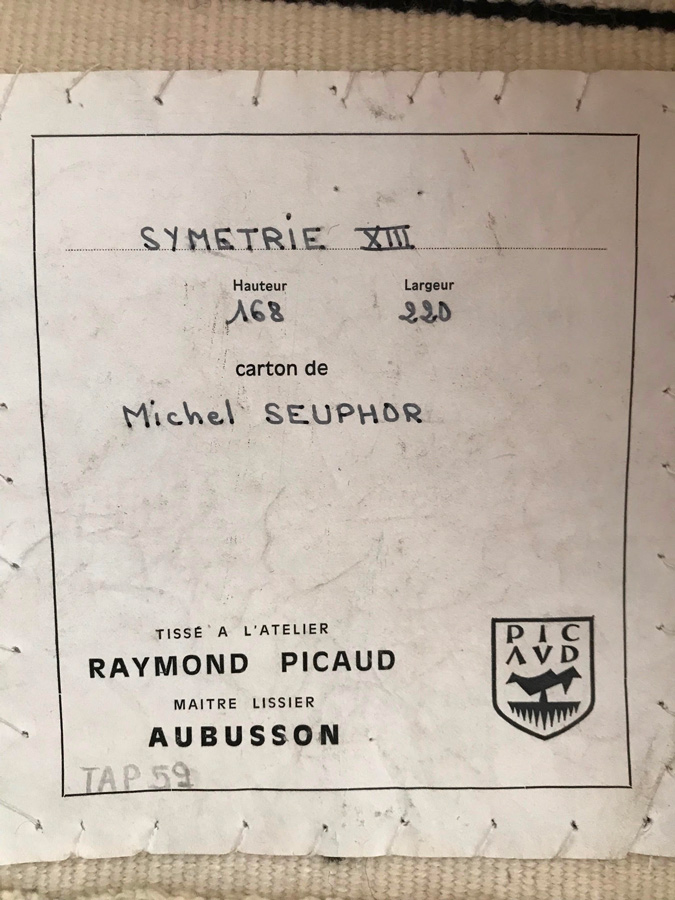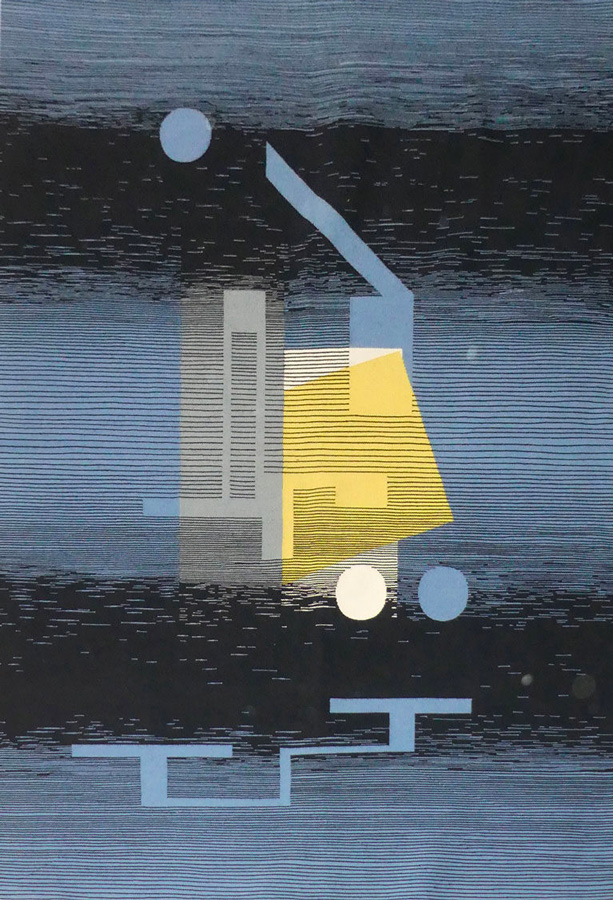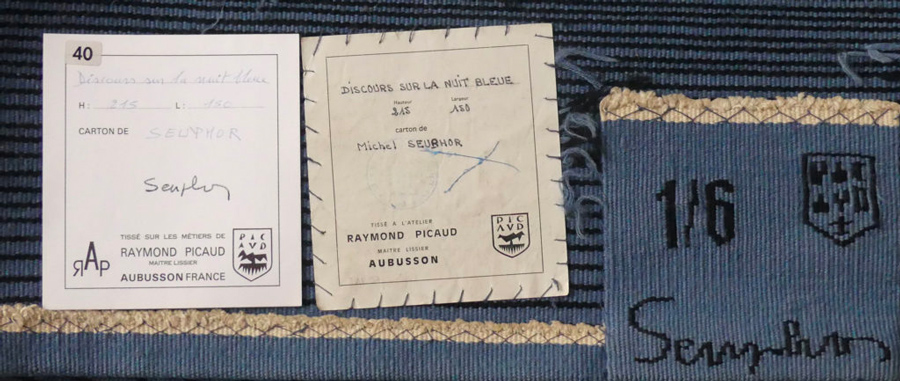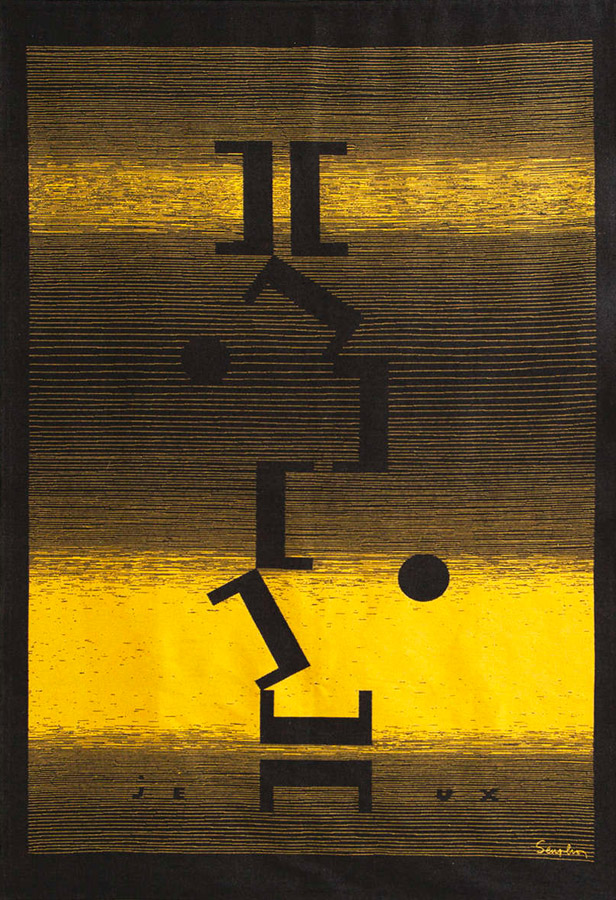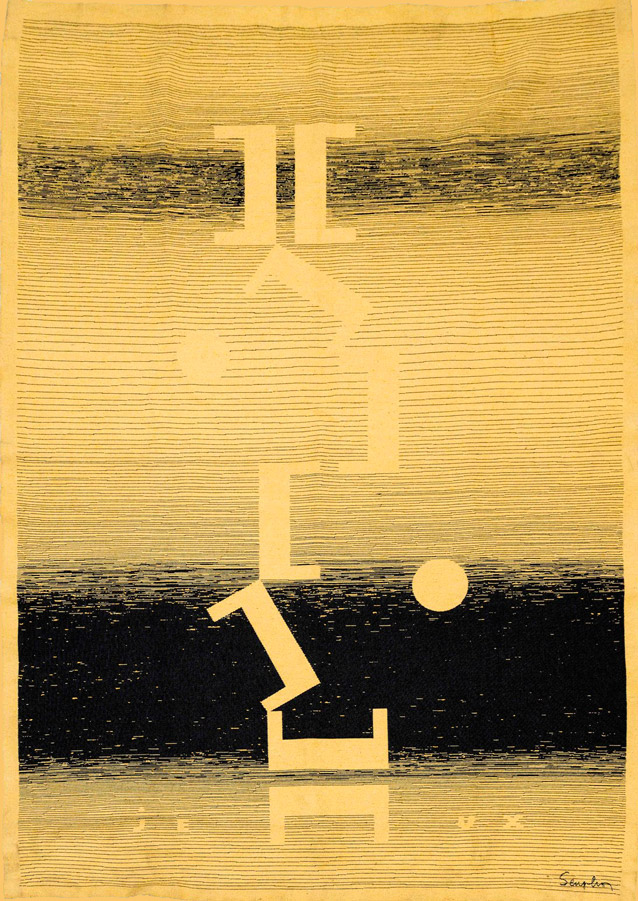LACUNA DRAWINGS – CERAMICS AND TAPESTRIES
LACUNA DRAWINGS
CERAMICS AND TAPESTRIES
« The horizon calls for the horizon, space calls for space, the line calls for the line. And the lacuna affirms the silence. My line does not compete, it shies away from contest and unfolds for its own pleasure. In the beginning was the line, and the line slowly unwound for its own pleasure, and for its own pleasure it stopped, making the lacuna appear. And the lacuna was.»
↑
Michel Seuphor, La vocation des mots
« The horizon calls for the horizon, space calls for space, the line calls for the line. And the lacuna affirms the silence. My line does not compete, it shies away from contest and unfolds for its own pleasure. In the beginning was the line, and the line slowly unwound for its own pleasure, and for its own pleasure it stopped, making the lacuna appear. And the lacuna was.»
↑
Michel Seuphor,
La vocation des mots
↑
Decorated vase from a drawing by Seuphor, 1964↑
σωφροσύνη (Moderation)
Drawing project for Sevres vase, Seuphor 1964
↑
Ορφεύς (Orphée)
Drawing project for a Sevres vase, Seuphor 1964
•
Seuphor (left) at the Manufacture of Sevres in front of the large Gensoli Vase, 1964.
Photo reproduced in the Mercator Catalogue. 1976
↑
Vases Gensoli, titrés
Ορφεύς (Orphée)et σωφροσύνη (sagesse, modération)
réalisés à la manufacture de Sèvres
CERAMICS
In February 1964 Serge Gauthier, director of the National Manufactory of Porcelain of Sevres, contacted Seuphor to propose to him to visit the manufacture and to transcribe his drawings in ceramics. Seuphor immediately went to the manufacture.
« For three consecutive weeks I went to the Sevres workshops every day, working under the direction of an experienced craftsman. In spite of my good will and a certain tenacity that is particular to me, the result was disappointing. No matter how good I was at drawing my straight lines with a pen and freehand, I could not do it at all with a brush and round shapes. It did not flow and always got stuck. My teacher, Mr. Plantard, took over with obvious satisfaction and succeeded remarkably in translating on two vases drawings that I had, for my part, very badly treated. »
This collaboration led to the making of two large vases of two meters in ceramics:
« One day, Mr. Gauthier casually led me in front of two enormous white vases, the largest that had ever been made at Sevres. “If you feel like it”, he said to me. My heart was poured into this idea, because the shapes had instantly seduced me. I returned to Sevres the next day with a pencil, an eraser and two horizontal drawings that seemed to me to be just right to be freely transcribed onto the vases. They were two drawings on the Orphic theme which had been fascinating me for several months and, in a way, the culmination of all the previous drawings. They seemed to me to complement each other happily, for they were far enough apart from each other to almost contradict each other and yet remained variations on the same theme. Both included a Greek word. On one was the word Ορφεύς (Orpheus), on the other the word σωφροσύνη (wisdom, moderation). The first was characterized by a large number of white vertical lines (lacunas) forming on one part of the drawing a very tight network. On top of it danced, somewhat like musical notes, short straight lines and half-moons. The other drawing had only a few vertical lines, of a more indolent layout, and thus presented a much calmer general character. In compensation, one could see, towards the top, a sort of agglomeration of lines and half-moons which made a spot of light. The two drawings were in front of me while I traced the forms, with the help of my pencil, on the vases. (…)
Plantard tackled without delay the long task of transferring these lines, as an accomplished technician, on each of the two vases. During all the duration of the work I went to Sevres every two or three days to see the progress and to decide, with Plantard, of the necessary touch-ups.
The first vase, coming out of the kiln, was a disaster. There were unwanted white spots in the design and even more unwanted greenish stains. Caprices of the fire. But the old technicians of the Manufacture had seen it all before! Plantard, undeterred, undertook to repaint the entire vase. After this long additional work, there was a new firing. The result, then, was quite satisfactory.»
↑
Extrait de Michel Seuphor, Applications techniques des 'dessins à lacunes’, Leonardo, Vol. 1, No. 4 (Oct., 1968), pp. 373-381.The two two-meter vases were acquired, through a commission from Iran, for the Imperial Court in Tehran. A new version, slightly modified, of the two vases, was then made and acquired by the Belgian Ministry of PTT in 1972.
Serge Gauthier testifies in Seuphor, editions Carmen Martinez, 1976, p 217:
« After my arrival in Sevres in 1964, I contemplated every day large vases called « two meters» , whose main body reached, in fact, only one meter seventy. These forms, created in four copies, were the works of Maurice Gensoli, who was the head of decoration at the Sevres factory from 1927 to 1958.
Gensoli wanted to create the largest possible shape that would stand the test of fire. Before their decoration, the vases had already been bisque fired at a temperature of 1000 degrees. The shape of these vases puzzled me. One evening, I had a small flash of genius when I saw a drawing by Michel Seuphor: here were lines that would decently dress these technical curiosities and likely transform them into a work of art.
To my surprise, Seuphor didn’t throw me out. He came to Sevres and tried his hand at it. With infinite patience, he learned to paint on porcelain, and I had the joy of having André Plantard create two decorations based on Michel Seuphor’s drawings, on a Gensoli vase and on a Mayodon vase.
Enthusiastic, Michel Seuphor realized two models, and André Plantard took three hundred hours to decorate each of the vases « of two meters».
Miracle! They did not melt at 1200 degrees.
Miracle! The black horizontal lines and the long white gaps made you want to turn around them. The dream of the ceramist was accomplished.
Miracle! They found enthusiastic buyers… and had no children, because the “national” factory did not have enough decorators to sprinkle the earth with Seuphor vases.
Michel Seuphor is probably related to the whirling dervishes, and he must have been protected by the wisdom of the Buddha when the fire, which is the real boss of the house, came into action.
He also has a goddam wife, who does a goddam job.”
CERAMICS
In February 1964 Serge Gauthier, director of the National Manufactory of Porcelain of Sevres, contacted Seuphor to propose to him to visit the manufacture and to transcribe his drawings in ceramics. Seuphor immediately went to the manufacture.
« For three consecutive weeks I went to the Sevres workshops every day, working under the direction of an experienced craftsman. In spite of my good will and a certain tenacity that is particular to me, the result was disappointing. No matter how good I was at drawing my straight lines with a pen and freehand, I could not do it at all with a brush and round shapes. It did not flow and always got stuck. My teacher, Mr. Plantard, took over with obvious satisfaction and succeeded remarkably in translating on two vases drawings that I had, for my part, very badly treated. »
This collaboration led to the making of two large vases of two meters in ceramics:
« One day, Mr. Gauthier casually led me in front of two enormous white vases, the largest that had ever been made at Sevres. “If you feel like it”, he said to me. My heart was poured into this idea, because the shapes had instantly seduced me. I returned to Sevres the next day with a pencil, an eraser and two horizontal drawings that seemed to me to be just right to be freely transcribed onto the vases. They were two drawings on the Orphic theme which had been fascinating me for several months and, in a way, the culmination of all the previous drawings. They seemed to me to complement each other happily, for they were far enough apart from each other to almost contradict each other and yet remained variations on the same theme. Both included a Greek word. On one was the word Ορφεύς (Orpheus), on the other the word σωφροσύνη (wisdom, moderation). The first was characterized by a large number of white vertical lines (lacunas) forming on one part of the drawing a very tight network. On top of it danced, somewhat like musical notes, short straight lines and half-moons. The other drawing had only a few vertical lines, of a more indolent layout, and thus presented a much calmer general character. In compensation, one could see, towards the top, a sort of agglomeration of lines and half-moons which made a spot of light. The two drawings were in front of me while I traced the forms, with the help of my pencil, on the vases. (…)
Plantard tackled without delay the long task of transferring these lines, as an accomplished technician, on each of the two vases. During all the duration of the work I went to Sevres every two or three days to see the progress and to decide, with Plantard, of the necessary touch-ups.
The first vase, coming out of the kiln, was a disaster. There were unwanted white spots in the design and even more unwanted greenish stains. Caprices of the fire. But the old technicians of the Manufacture had seen it all before! Plantard, undeterred, undertook to repaint the entire vase. After this long additional work, there was a new firing. The result, then, was quite satisfactory.»
↑
Extrait de Michel Seuphor, Applications techniques des 'dessins à lacunes’, Leonardo, Vol. 1, No. 4 (Oct., 1968), pp. 373-381.The two two-meter vases were acquired, through a commission from Iran, for the Imperial Court in Tehran. A new version, slightly modified, of the two vases, was then made and acquired by the Belgian Ministry of PTT in 1972.
Serge Gauthier testifies in Seuphor, editions Carmen Martinez, 1976, p 217:
« After my arrival in Sevres in 1964, I contemplated every day large vases called « two meters» , whose main body reached, in fact, only one meter seventy. These forms, created in four copies, were the works of Maurice Gensoli, who was the head of decoration at the Sevres factory from 1927 to 1958.
Gensoli wanted to create the largest possible shape that would stand the test of fire. Before their decoration, the vases had already been bisque fired at a temperature of 1000 degrees. The shape of these vases puzzled me. One evening, I had a small flash of genius when I saw a drawing by Michel Seuphor: here were lines that would decently dress these technical curiosities and likely transform them into a work of art.
To my surprise, Seuphor didn’t throw me out. He came to Sevres and tried his hand at it. With infinite patience, he learned to paint on porcelain, and I had the joy of having André Plantard create two decorations based on Michel Seuphor’s drawings, on a Gensoli vase and on a Mayodon vase.
Enthusiastic, Michel Seuphor realized two models, and André Plantard took three hundred hours to decorate each of the vases « of two meters».
Miracle! They did not melt at 1200 degrees.
Miracle! The black horizontal lines and the long white gaps made you want to turn around them. The dream of the ceramist was accomplished.
Miracle! They found enthusiastic buyers… and had no children, because the “national” factory did not have enough decorators to sprinkle the earth with Seuphor vases.
Michel Seuphor is probably related to the whirling dervishes, and he must have been protected by the wisdom of the Buddha when the fire, which is the real boss of the house, came into action.
He also has a goddam wife, who does a goddam job.”
↑
Decorated vase from a drawing by Seuphor, 1964↑
σωφροσύνη (Moderation)
Drawing project for Sevres vase, Seuphor 1964
↑
Ορφεύς (Orphée)
Drawing project for a Sevres vase, Seuphor 1964
•
Seuphor (left) at the Manufacture of Sevres in front of the large Gensoli Vase, 1964.
Photo reproduced in the Mercator Catalogue. 1976
↑
Vases Gensoli, titrés
Ορφεύς (Orphée)et σωφροσύνη (sagesse, modération)
réalisés à la manufacture de Sèvres
↑
Faire (left) et Devenir (right)
Tapestries of 2 m 80 cm x 2 m x 80 cm, 1958
Made by Scholten and van de Riviere, in Amsterdam, for the House of the Province of Arnhem, The Netherlands
↑
Tapestry La terre
and carpet 'Malaise Planning',
. Made for the management office of the Bank of Paris and the Netherlands, Brussels, Belgium, 1962
THE TAPESTRIES
In 1954, Professor Hammacher, a friend of Seuphor and director of the Kröller-Müller museum in Holland, had the idea, during a visit, to create tapestries after Seuphor’s drawings. Shortly afterwards, he organized an order for two tapestries intended for the new house of the province of Gelderland (Huis der Pronvincie) in Arnhem in Holland. These first tapestries were made by two Dutch weavers, Herman Scholten and Désirée van de Rivière.
« Craftsmen in love with perfection, they worked on it for almost four years, in a sort of religious way. I went to Amsterdam several times to follow the progress of the work in their studio and to make useful remarks. For about ten years now, the two tapestries, each measuring 2.80 x 2.80 cm, have been on display in the Salle des Pas Perdus of this official building. The one is called ‘faire’ (to make) (symbolized by the fire), it is with dominant red and mauve; the other is called to ‘devenir’ (become) (symbolized by the air), it is with dominant green and yellow. These colors, moreover, concern only the background or the lacunas, the horizontal lines are always uniquely black. » *
The two tapestries, lent by the House of the Province, were exposed to the Gallery Denise Rene, in Paris, in 1959.
These tapestries were noticed in Arnhem by Mr. Emile Langui, Director General of Arts and Letters of Belgium, who introduced Seuphor to Elisabeth de Saedeleer, daughter of the Belgian painter Valérius de Saedeleer, who ran a reputed weaving workshop in Brussels. Between 1959 and 1963, she made about twenty-five carpets and tapestries based on Seuphor’s drawings.
Some of the tapestries were the subject of various exhibitions and projects, as shown in these photos from the Maeght gallery of an outdoor exhibition of the works in 1971.
THE TAPESTRIES
In 1954, Professor Hammacher, a friend of Seuphor and director of the Kröller-Müller museum in Holland, had the idea, during a visit, to create tapestries after Seuphor’s drawings. Shortly afterwards, he organized an order for two tapestries intended for the new house of the province of Gelderland (Huis der Pronvincie) in Arnhem in Holland. These first tapestries were made by two Dutch weavers, Herman Scholten and Désirée van de Rivière.
« Craftsmen in love with perfection, they worked on it for almost four years, in a sort of religious way. I went to Amsterdam several times to follow the progress of the work in their studio and to make useful remarks. For about ten years now, the two tapestries, each measuring 2.80 x 2.80 cm, have been on display in the Salle des Pas Perdus of this official building. The one is called ‘faire’ (to make) (symbolized by the fire), it is with dominant red and mauve; the other is called to ‘devenir’ (become) (symbolized by the air), it is with dominant green and yellow. These colors, moreover, concern only the background or the lacunas, the horizontal lines are always uniquely black. » *
The two tapestries, lent by the House of the Province, were exposed to the Gallery Denise Rene, in Paris, in 1959.
These tapestries were noticed in Arnhem by Mr. Emile Langui, Director General of Arts and Letters of Belgium, who introduced Seuphor to Elisabeth de Saedeleer, daughter of the Belgian painter Valérius de Saedeleer, who ran a reputed weaving workshop in Brussels. Between 1959 and 1963, she made about twenty-five carpets and tapestries based on Seuphor’s drawings.
Some of the tapestries were the subject of various exhibitions and projects, as shown in these photos from the Maeght gallery of an outdoor exhibition of the works in 1971.
↑
Faire (left) et Devenir (right)
Tapestries of 2 m 80 cm x 2 m x 80 cm, 1958
Made by Scholten and van de Riviere, in Amsterdam, for the House of the Province of Arnhem, The Netherlands
↑
Tapestry La terre
and carpet 'Malaise Planning',
. Made for the management office of the Bank of Paris and the Netherlands, Brussels, Belgium, 1962
Towards the end of the 1960s, Seuphor began work on his first large tapestry at the Gobelins Manufactory in Paris (according to archives, it was destined for the Osaka World Fair). Seuphor named it Polymnie; it is entirely in black and white and measures 2 m 68 cm high and 6 m 14 cm long.
A second tapestry was commissioned by the Gobelins in 1971, entitled Il faut maintenant construire le monde. However, the only traces we have of this project are a photo of a collage drawing with a handwritten note on the back indicating « for Gobelins tapestry» ; and another photo of Seuphor in front of a tapestry bearing the inscription il faut maintenant construire le monde dated 1974.
Towards the end of the 1960s, Seuphor began work on his first large tapestry at the Gobelins Manufactory in Paris (according to archives, it was destined for the Osaka World Fair). Seuphor named it Polymnie; it is entirely in black and white and measures 2 m 68 cm high and 6 m 14 cm long.
A second tapestry was commissioned by the Gobelins in 1971, entitled Il faut maintenant construire le monde. However, the only traces we have of this project are a photo of a collage drawing with a handwritten note on the back indicating « for Gobelins tapestry» ; and another photo of Seuphor in front of a tapestry bearing the inscription il faut maintenant construire le monde dated 1974.
In 1968, a second large tapestry of 17 m2 was created in the workshop of Mrs. Cauquil-Prince in Paris, for the new law faculty of the University of Bordeaux.
« Quel destin ? Quel ruissellement d’Etoiles ? Quel spectacle ? is the title I gave to this tapestry. It translates the impression I had of the drawing when it was finished: a sort of cosmic theater. Quite romantic, in short. »
↑
Excerpt from Michel Seuphor, Technical Applications of Gap Drawings,
Leonardo, Vol. 1, No. 4 (Octobre 1968), pp. 373-381
In 1968, a second large tapestry of 17 m2 was created in the workshop of Mrs. Cauquil-Prince in Paris, for the new law faculty of the University of Bordeaux.
« Quel destin ? Quel ruissellement d’Etoiles ? Quel spectacle ? is the title I gave to this tapestry. It translates the impression I had of the drawing when it was finished: a sort of cosmic theater. Quite romantic, in short. »
↑
Excerpt from Michel Seuphor, Technical Applications of Gap Drawings,
Leonardo, Vol. 1, No. 4 (Octobre 1968), pp. 373-381
Then, in 1973, another large tapestry wa made, this time for the new Faculty of Pharmacy in Chatenay Malabry. It is entitled Comme une musique.
•
Comme une musique, 1973, tapestry placed above the entrance of an amphitheater of the Faculty of Pharmacy in Chatenay Malabry. The restored tapestry will be officially hung on 15 September 2022, on one of the walls of the Maupertuis hall of the « Paris-Saclay» university in EvryThen, in 1973, another large tapestry wa made, this time for the new Faculty of Pharmacy in Chatenay Malabry. It is entitled Comme une musique.
•
Comme une musique, 1973, tapestry placed above the entrance of an amphitheater of the Faculty of Pharmacy in Chatenay Malabry. The restored tapestry will be officially hung on 15 September 2022, on one of the walls of the Maupertuis hall of the « Paris-Saclay» university in Evry